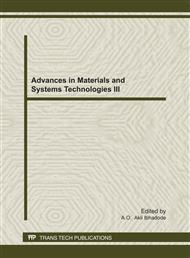p.421
p.431
p.439
p.449
p.457
p.467
p.475
p.487
p.495
Modeling Declining Incomes from Non-Renewable Natural Resources
Abstract:
Traditionally, petroleum, accumulated in subsurface containers – reservoirs, is often characterized as a non-renewable natural resource. Thus, the rate of exploitation of its gaseous and/or liquid phases is expected to decline with time. The net incomes from the development of these finite assets play very important roles in determining the profitability and net values of the petroleum assets. We present equations, simple relationships, which can be used to model the development life of a petroleum asset, and thus, the net incomes. These relationships provide very simple and easy to use models, for field development plans (FDPs), a key requirement in petroleum economics. Nomenclature
Info:
Periodical:
Pages:
457-466
Citation:
Online since:
October 2011
Authors:
Price:
Сopyright:
© 2012 Trans Tech Publications Ltd. All Rights Reserved
Share:
Citation:


